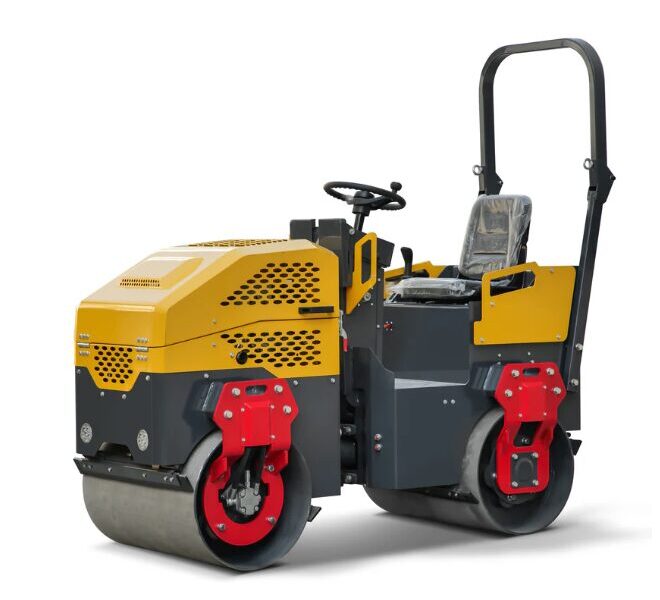Mini Excavators vs. Skid Steers: Which Compact Machine Is Right for Your Job Site?

When it comes to compact construction machinery, two powerful and versatile machines often come to mind: mini excavators and skid steers. Both are designed to work efficiently in tight spaces, making them ideal for small to mid-sized job sites. However, these machines serve different purposes and excel in different tasks.
If you’re a contractor or construction professional looking to invest in compact equipment, it’s essential to understand the differences, advantages, and ideal applications of mini excavators and skid steers. In this guide, we’ll compare the two machines and help you decide which is best for your next project. We’ll also explain how additional equipment like Mini Dumpers and road rollers can complement your setup.
What is a Mini Excavator?
A mini excavator is a compact version of a traditional excavator, typically weighing between 0.8 to 2 tons. It features a boom arm with a bucket and is mounted on either rubber or steel tracks. Mini excavators are primarily used for digging, trenching, and demolition.
Key Features:
- 360-degree rotation for precise digging
- Excellent for confined spaces and delicate ground surfaces
- Compatible with various attachments like augers, rippers, and hammers
At MMSCE.com, mini excavators are available in various sizes and engine types, including Rato gasoline engines and Kubota diesel engines, ensuring there’s a model suitable for every job.
What is a Skid Steer?
A skid steer is a compact, four-wheel or tracked machine known for its agility and wide range of attachments. Unlike mini excavators, skid steers are more commonly used for material handling, grading, and site cleanup.
Key Features:
- Tight turning radius for maximum maneuverability
- Front-mounted tools like buckets, forks, and sweepers
- Ideal for loading, grading, and transporting materials
Skid steers are often used in combination with other machines, such as Mini Dumpers and road rollers, to create a complete job site solution.
Comparing Mini Excavators and Skid Steers
| Feature | Mini Excavator | Skid Steer |
| Primary Use | Digging, trenching, demolition | Loading, grading, material transport |
| Mobility | Tracked for stability on uneven ground | Wheeled or tracked for flat terrain |
| Maneuverability | 360-degree rotation | Tight turning radius |
| Operator Comfort | Cab/canopy, ergonomic controls | Open or enclosed cab options |
| Attachments | Buckets, augers, rippers, hammers | Buckets, forks, grapples, sweepers |
| Best for | Excavation in tight spaces | Moving and grading materials |
When to Choose a Mini Excavator
Mini excavators are perfect when your job requires precision digging. Whether you’re working on trenching, installing pipes, or light demolition, the boom arm and compact size make this machine ideal for confined or urban areas. With a Mini Dumper, you can transport the dug material efficiently, saving time and labor.
For example, at MMSCE.com, the MS10 Mini Excavator with a 15 HP engine and 68.9-inch digging depth is perfect for small-scale construction jobs. Pairing it with a Mini Dumper allows for fast movement of soil or debris to designated areas on the site.
When to Choose a Skid Steer
If your job site requires material handling, grading, or backfilling, a skid steer might be the better choice. Skid steers can be equipped with various attachments to suit the task, including buckets, forks, and brooms. They’re excellent for site cleanup and loading materials into trucks or dumpers.
On projects where compacted surfaces are needed after digging or grading, a road roller is used alongside skid steers to smooth and compact the ground, ensuring durability and safety.
Combining Mini Excavators with Mini Dumpers and Road Rollers
Many job sites benefit from using multiple compact machines that complement one another. Here’s how they work together:
- Mini Excavator: Handles all digging and trenching tasks.
- Mini Dumper: Transports soil, gravel, or debris from the excavation area.
- Skid Steer: Loads materials into dump trucks or redistributes soil.
- Road Rollers: Compacts the area after digging and filling for a stable foundation.
This combination allows for efficient workflow, reduced labor costs, and better project outcomes.
At MMSCE, all these machines—including Mini Dumpers and road rollers—are available at affordable prices, with fast shipping and U.S.-based support.
Safety and Efficiency Considerations
Both mini excavators and skid steers are designed for safe, efficient use, but training is essential. Always ensure operators are familiar with:
- Control systems and safety features
- Attachment handling procedures
- Site-specific hazards and precautions
MMSCE provides detailed user manuals, technical support, and a 1-year warranty on all equipment. Plus, lifetime support ensures you can maintain your machines long-term.
Final Thoughts
When choosing between a mini excavator and a skid steer, consider the specific needs of your job site. If you need to dig with precision, a mini excavator is your go-to machine. If you need to move materials or perform grading tasks, a skid steer is more appropriate.
For maximum efficiency, consider adding a Mini Dumper and road rollers to your equipment fleet. This combination covers digging, transporting, and compacting—ensuring your project runs smoothly from start to finish.
Explore high-quality compact construction equipment at MMSCE.com, where you’ll find affordable mini excavators, Mini Dumpers, skid steers, and road rollers designed to boost productivity on every job site.



